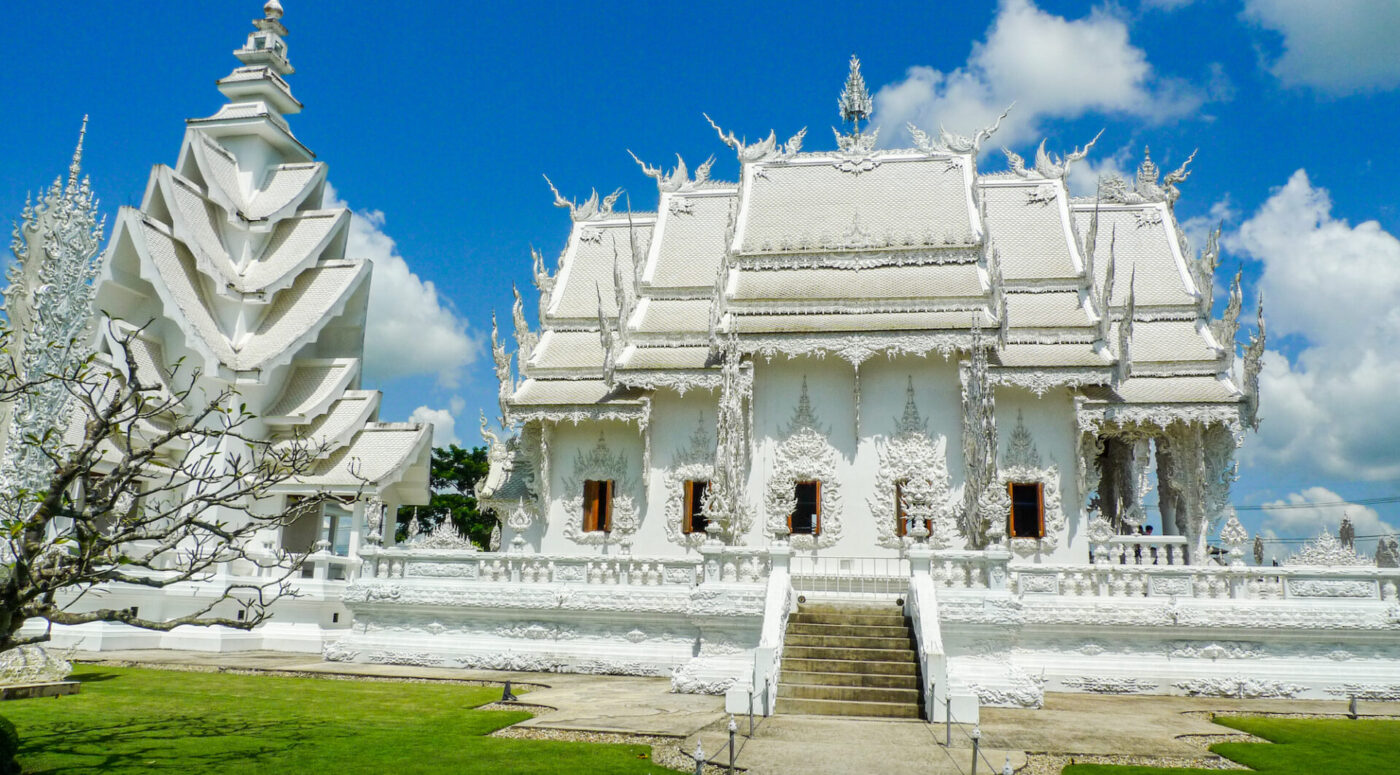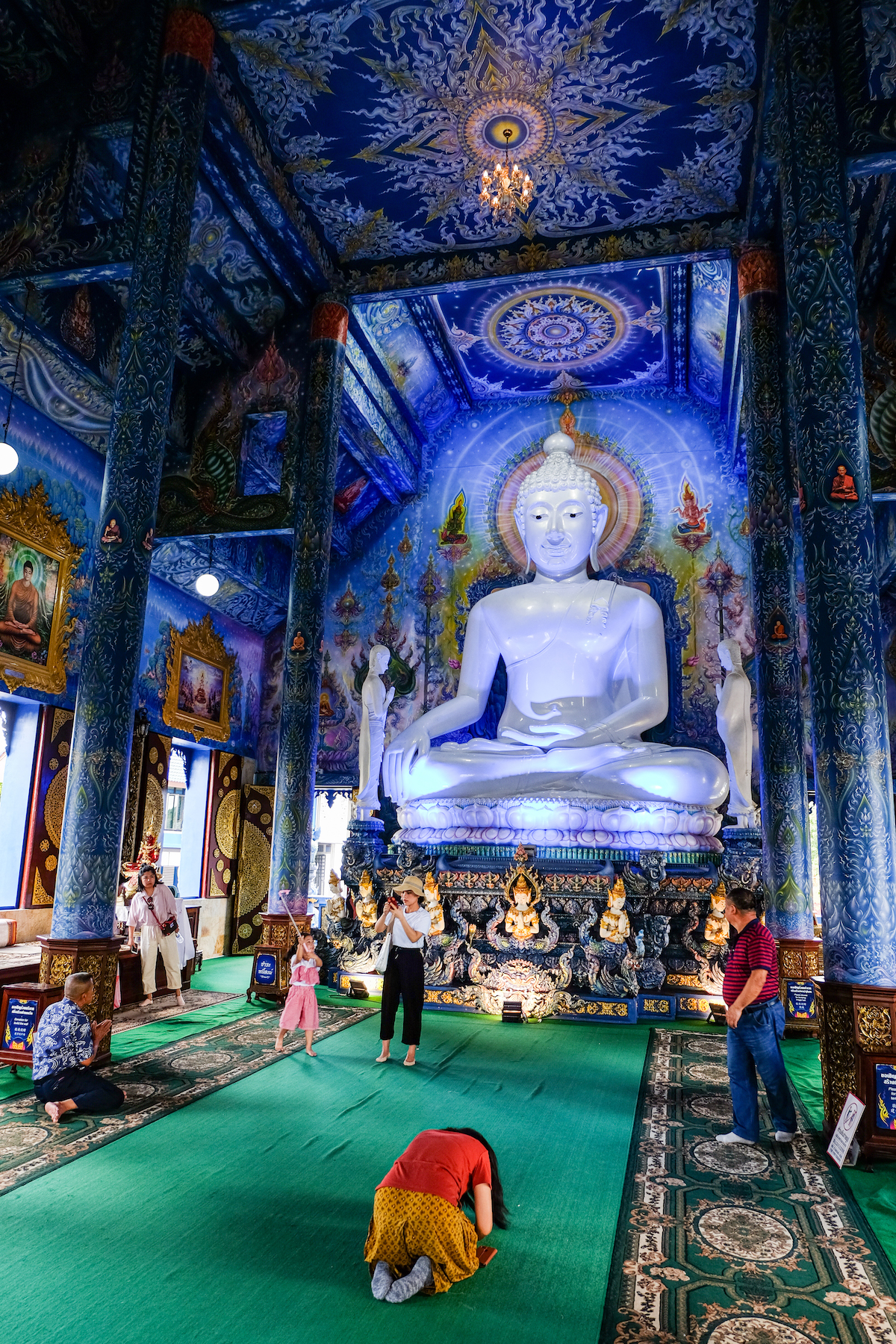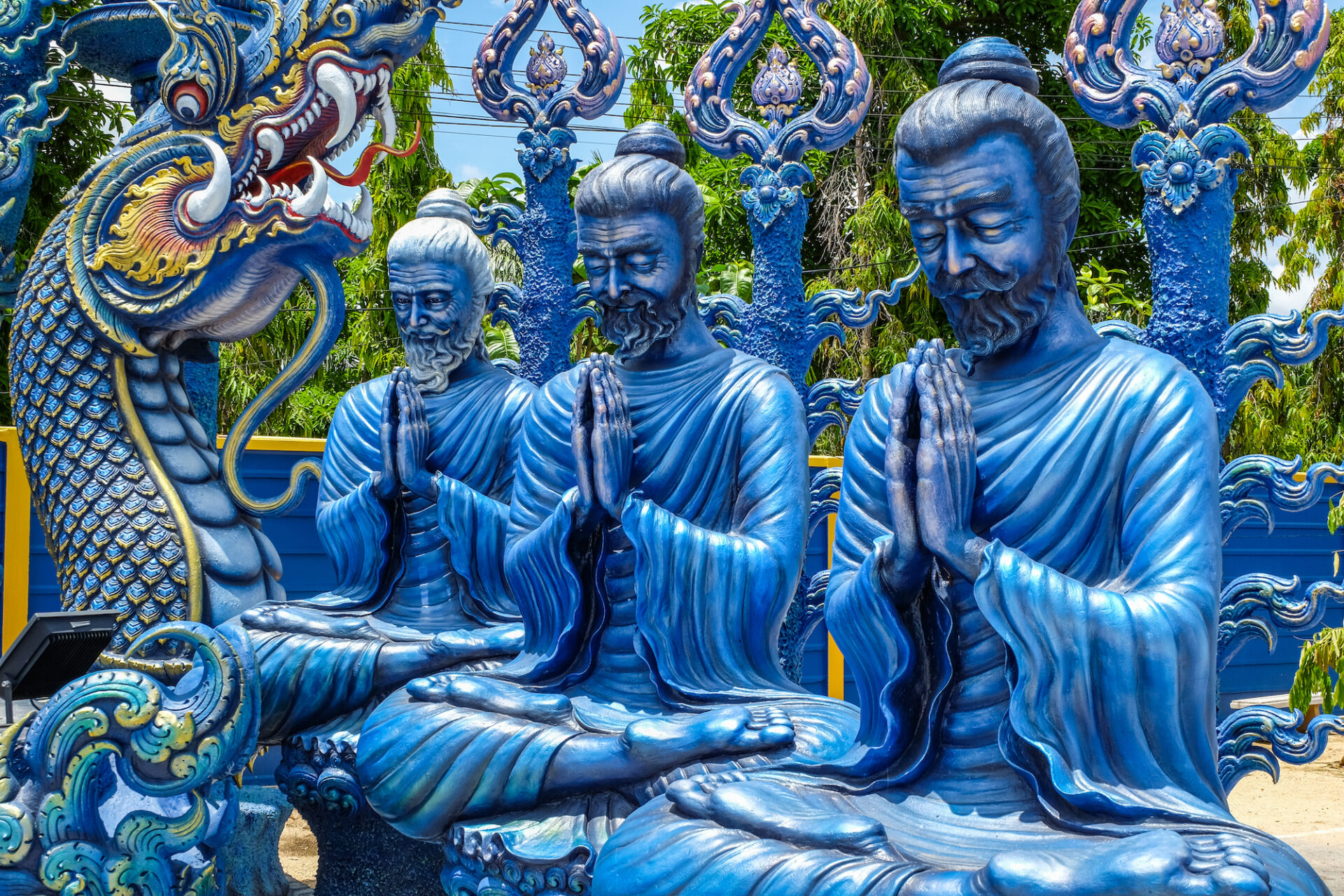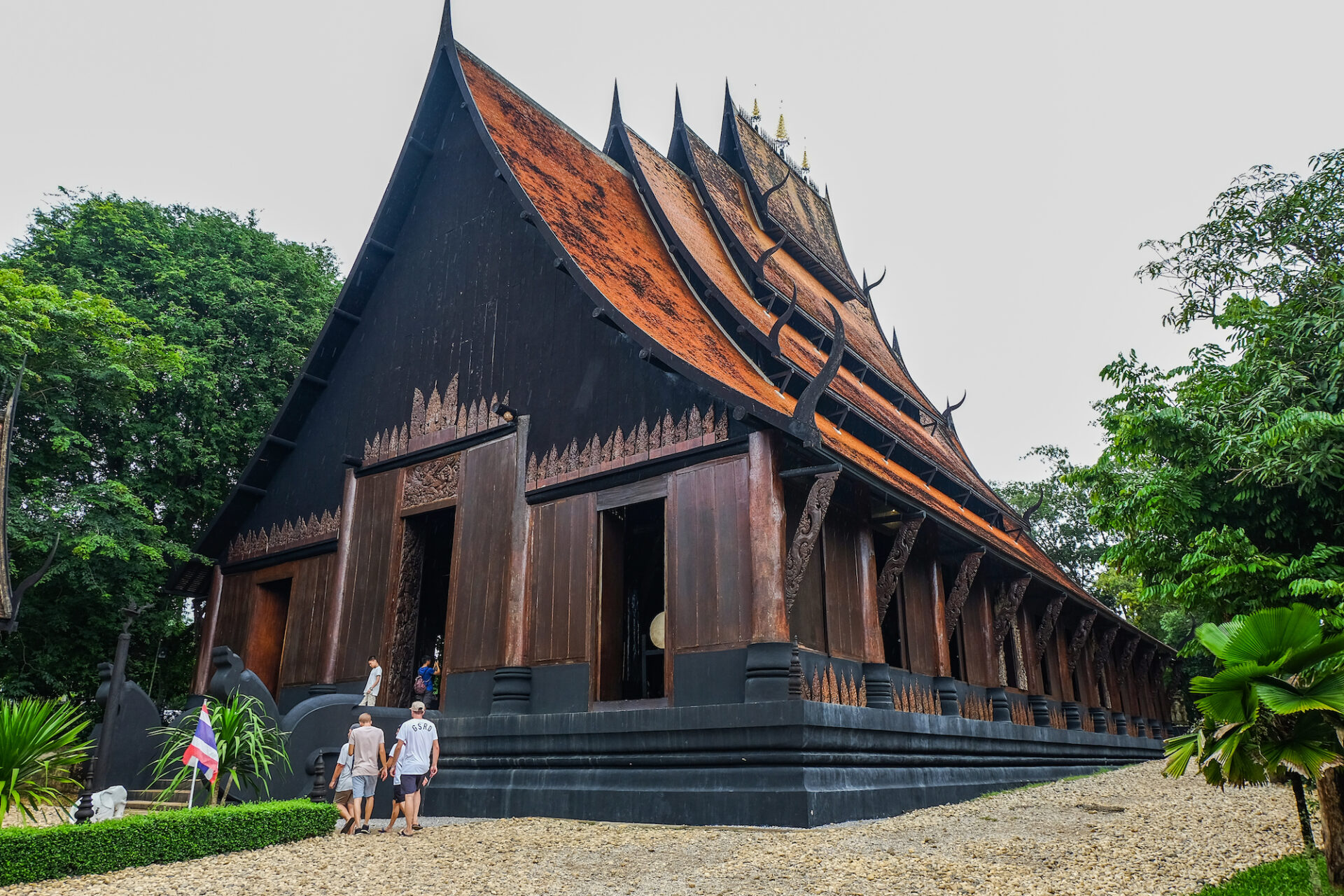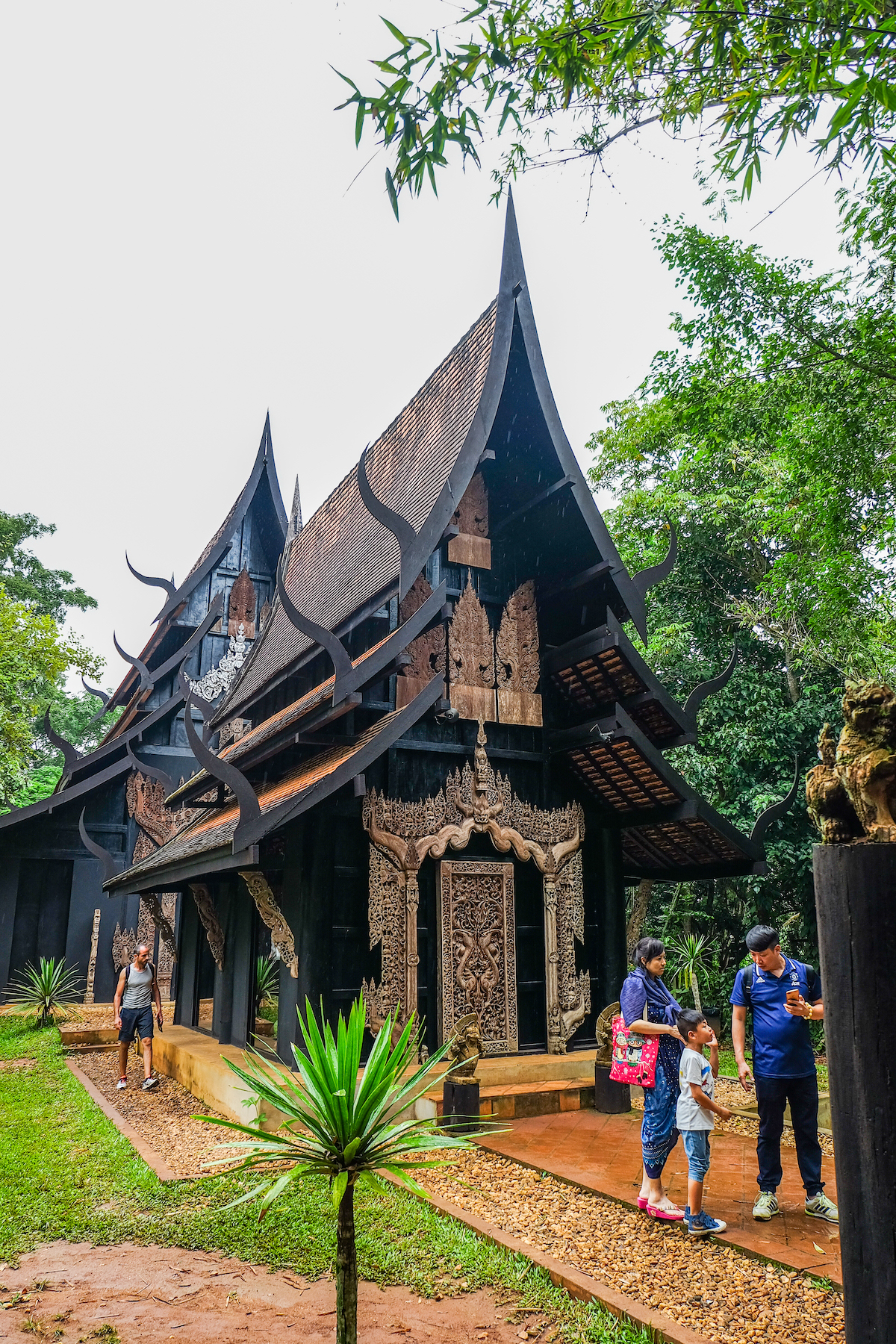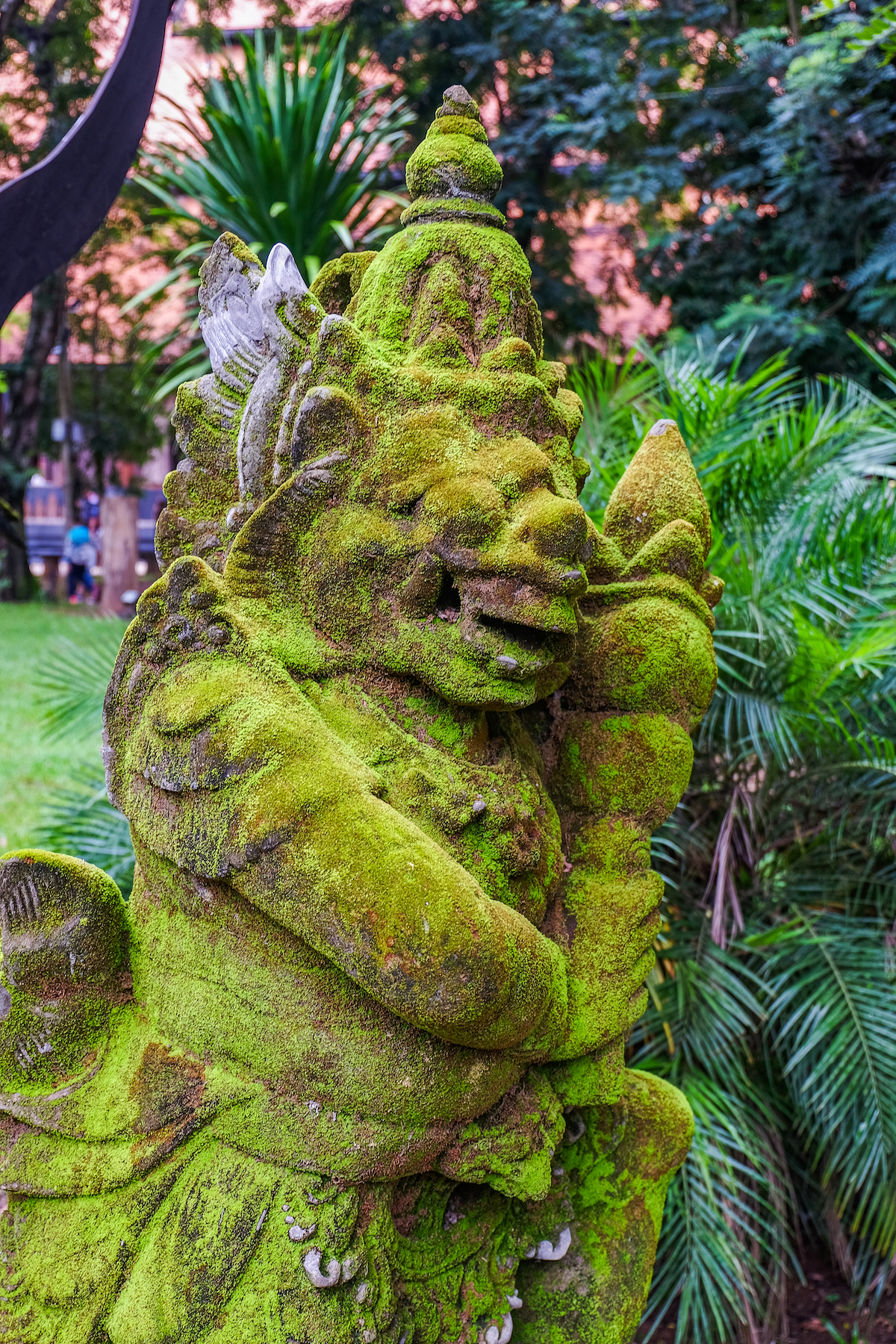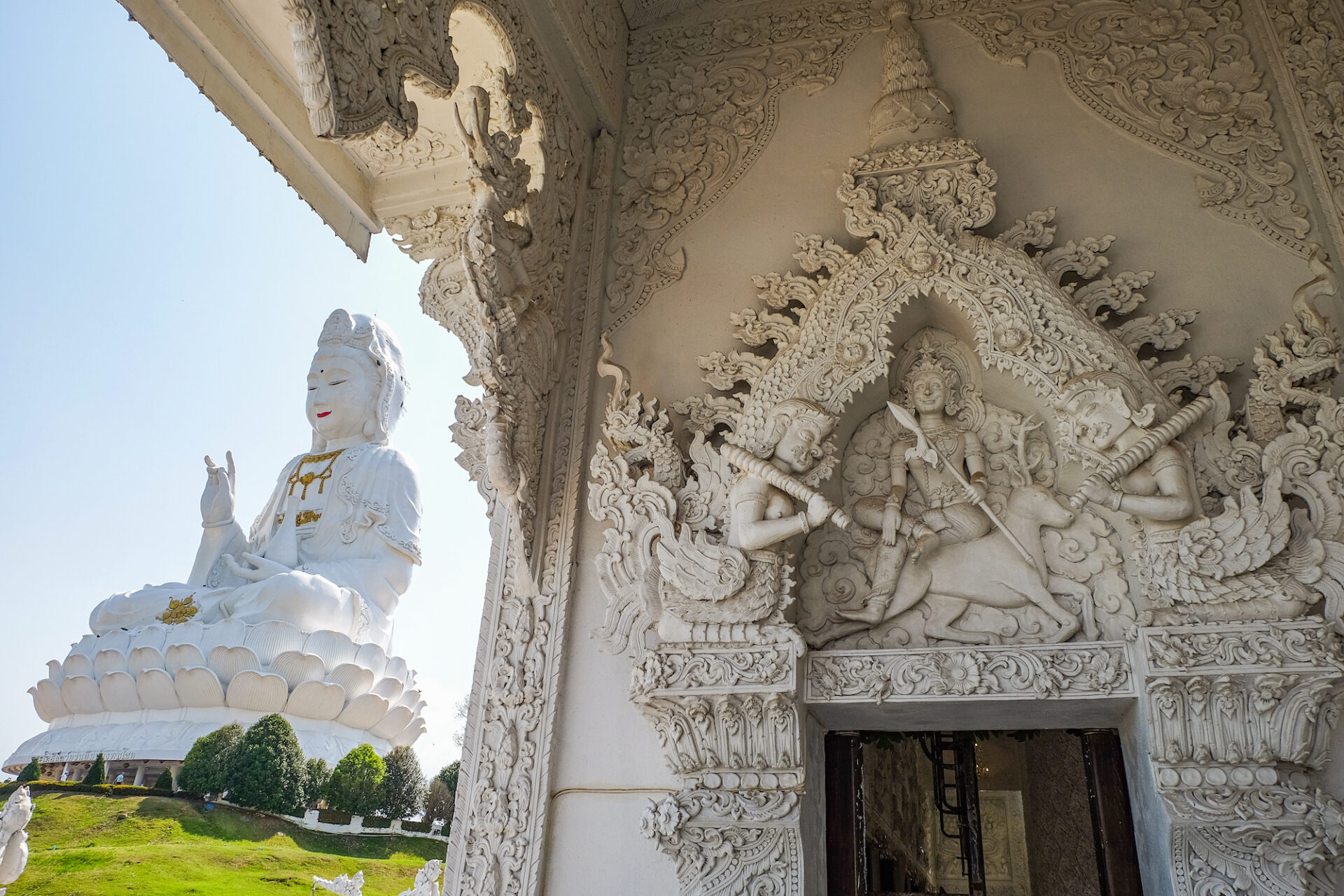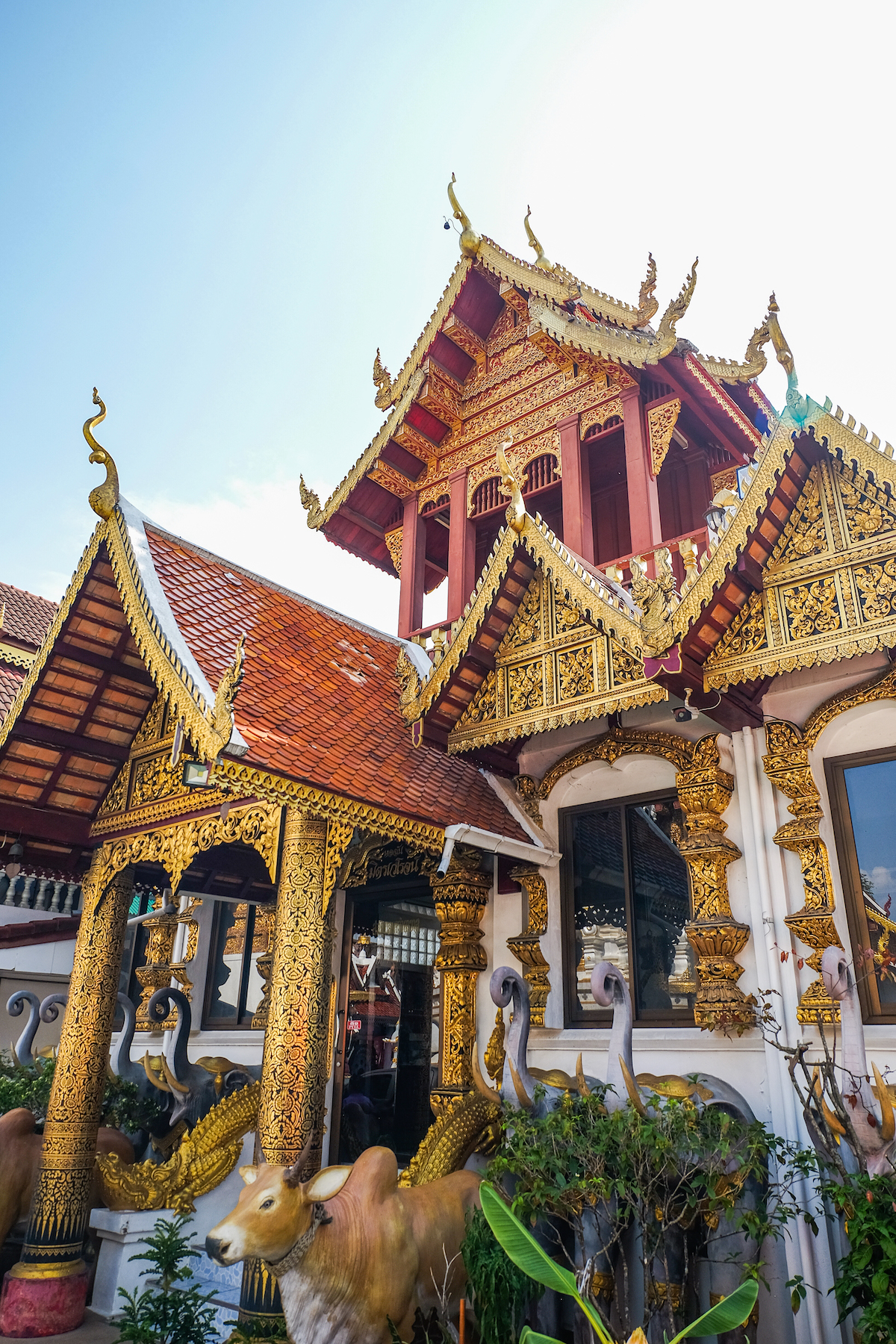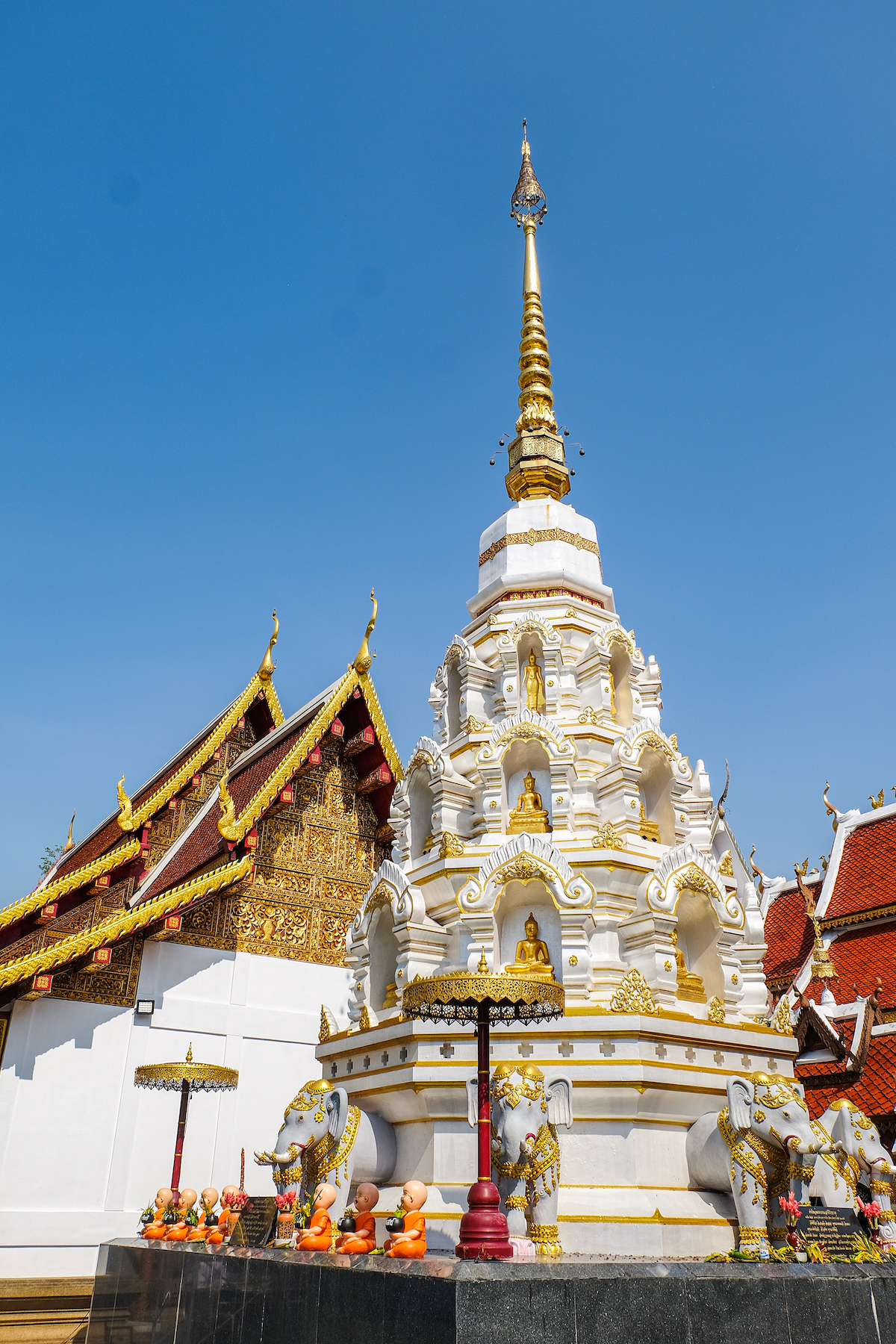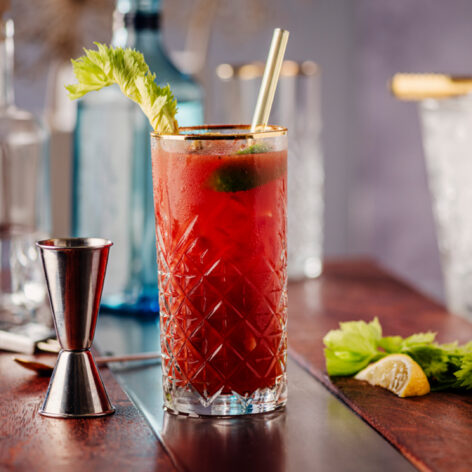For many decades, visitors knew Chiang Rai only as a jumping off point for tours to the Golden Triangle or as a base for treks to hilltribe villages, not as a destination in its own right. But in recent years, the city has become famous for several stunning new buildings, and a tour is a great way to tune in to the artistic spirit of Chiang Rai.
Starting to the south of the city at the White Temple – known as Wat Rong Khun – you’ll head north and cross the Kok River for a look at the Blue Temple (Wat Rong Suea Ten), move further north to the Black House (aka Baan Dam), then west to Wat Huay Pla Kang before finishing up at Wat Klang Wiang, smack dab in the heart of Chiang Rai. Keep your cameras (and a bottle of water!) at the ready.
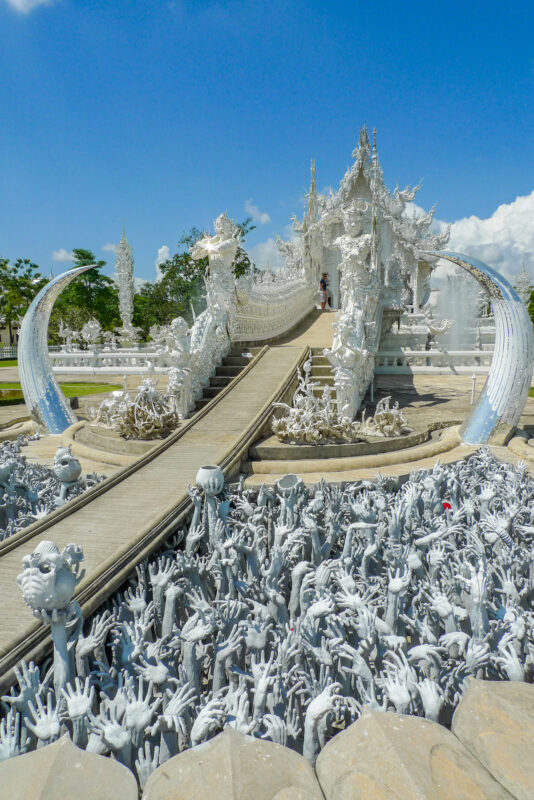
Greed, desire and Harry Potter at the White Temple
The tour begins at the White Temple (8am-5pm, admission 100 Baht) partly because it is Chiang Rai’s most popular attraction by far and partly because you need to get there early to avoid busloads of tourists who might spoil your photo shoot.
The site is the brainchild of Thai National Artist Chalermchai Kositpipat, who in the late 1990s took over the dilapidated Wat Rong Khun in his home village, and began construction of what is now one of the most photographed temples on the planet.
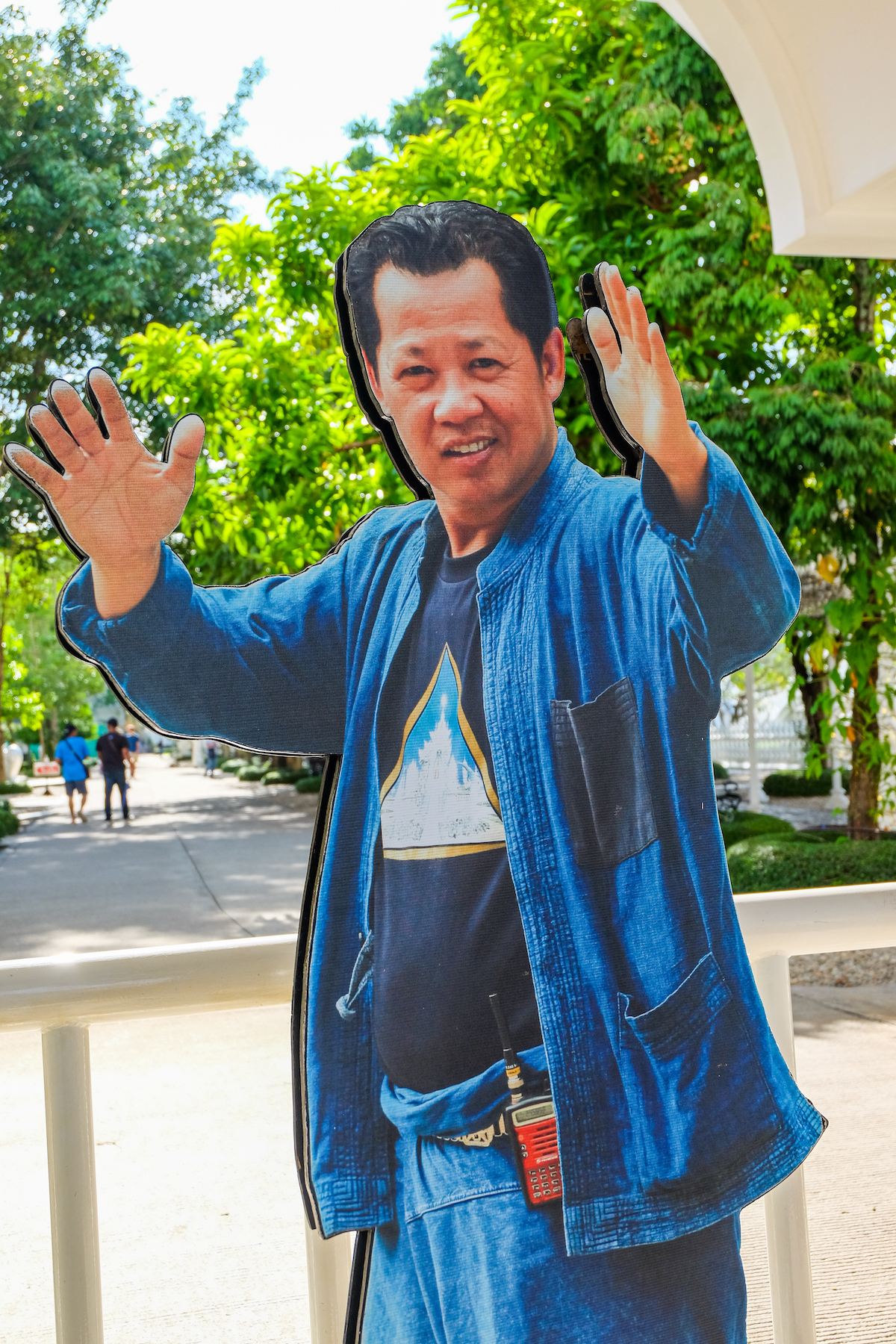

Before entering the dazzling ubosot (ordination hall) with its countless protuberances bursting out in every direction, you have to pass between seas of supplicating hands reaching up from a dark recess in the ground. It’s a disturbing sight and a reminder by the artist of the dangers of greed and desire.
The walls inside the hall are covered with images from pop culture such as Superman, Harry Potter, Terminator and the World Trade Center attack on 9/11, which Kositpipat hopes will remind visitors of the eternal struggle between good and evil. Besides these moral lessons, the artist’s humorous side is evident in various features of the temple, such as a spot for a selfie with a Thai-style Iron Man sitting on a bench and carvings of ghoulish faces hanging in trees.
Perhaps the biggest surprise of all though, are the Golden Toilets, where “sitting on the throne” acquires a new meaning. To Kositpipat, gold represents the body and the material world, while white represents the purity of a calm mind.
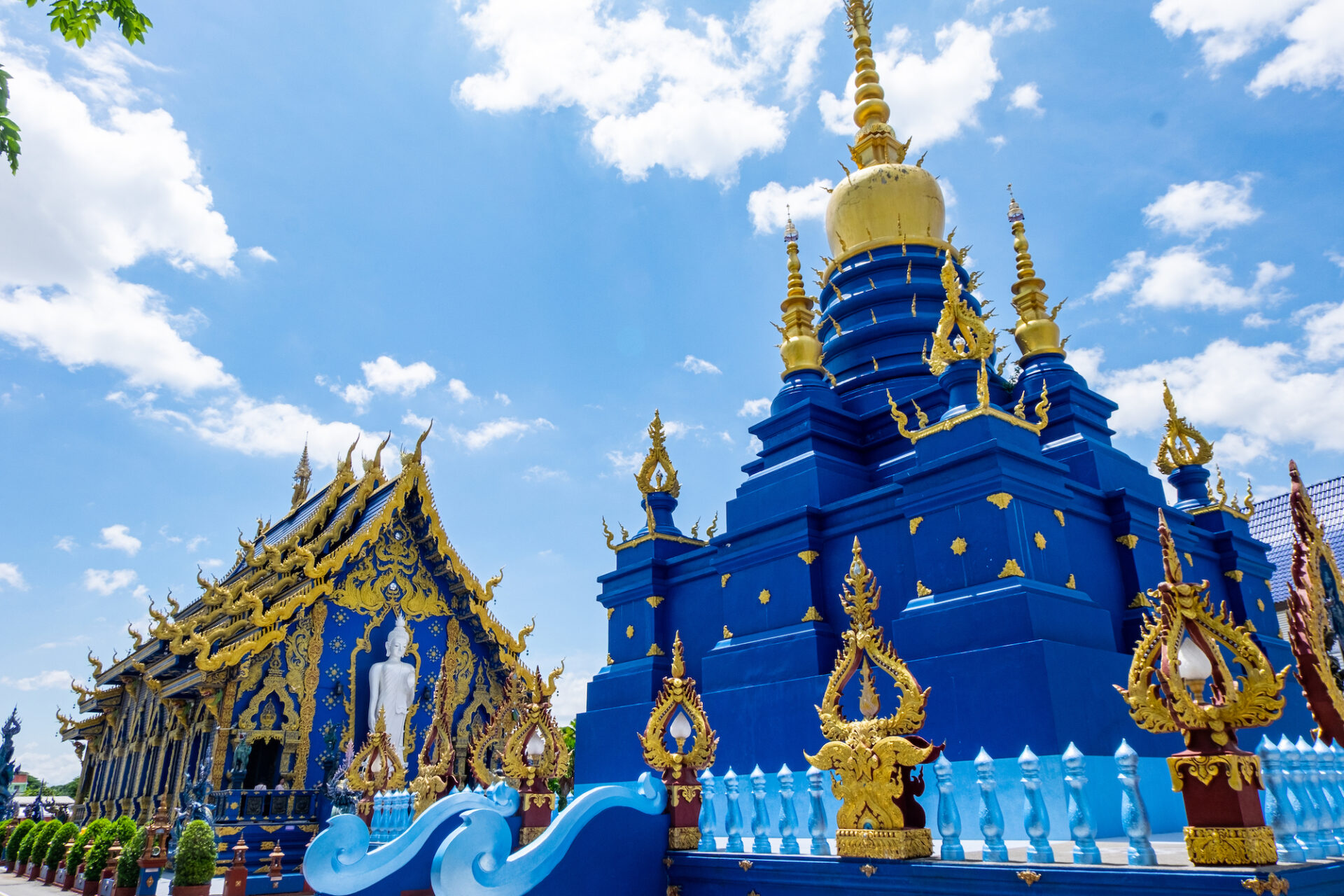
Shades of blue at the monochrome Wat Rong Suea Ten
From the White Temple, head north on Highway 1 and take the first left after crossing the Kok River, where you’ll find Wat Rong Suea Ten, better known as the Blue Temple (7am–8pm; admission free). If some elements of the design seem familiar, don’t be surprised, as its creator, Putha Kabkaew, was a student of Kositpipat. You’ll find no visions of hell or moral warnings here, just eye-catching statues of blue ascetics, blue warriors, blue nagas and a blue stupa too.


